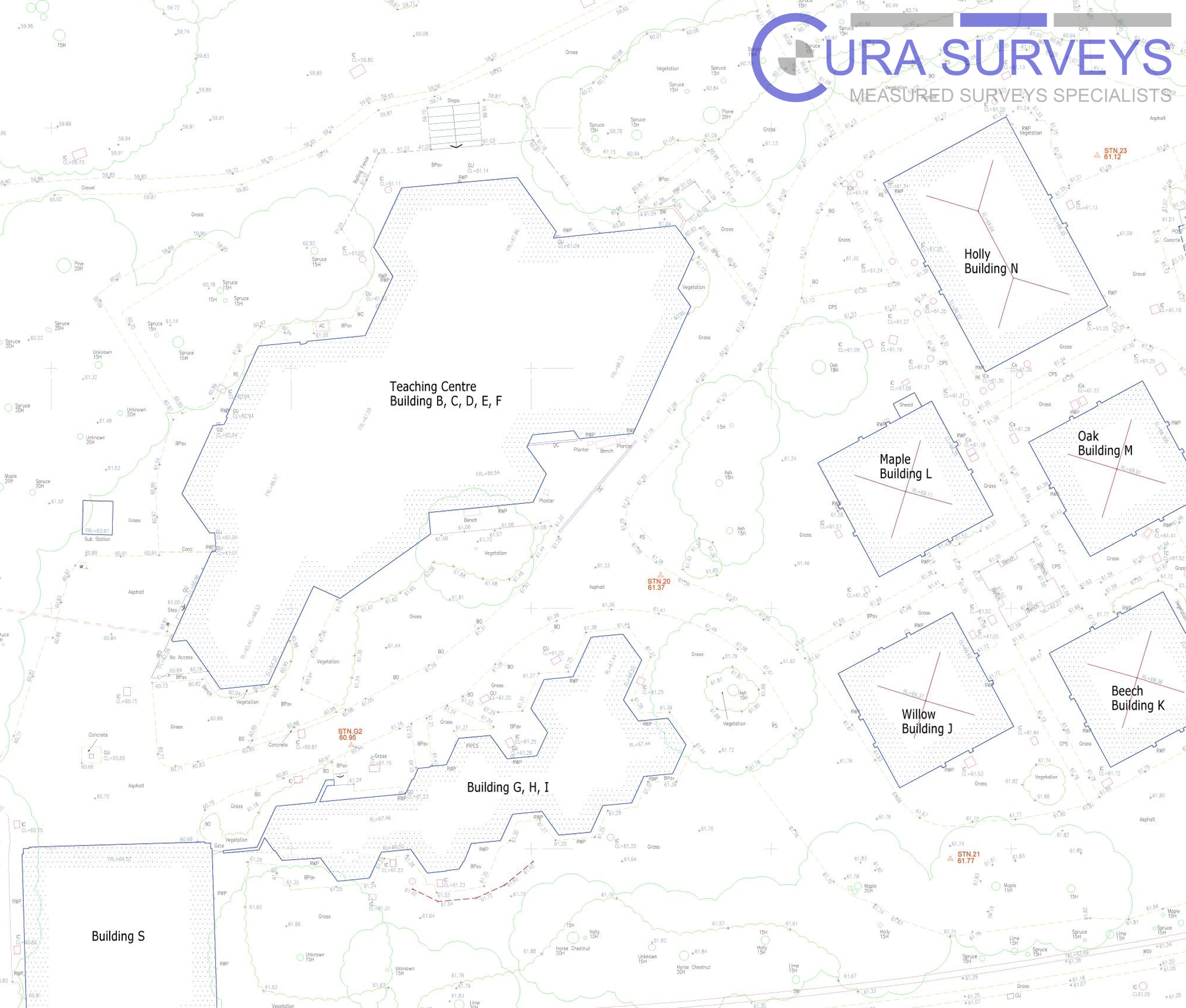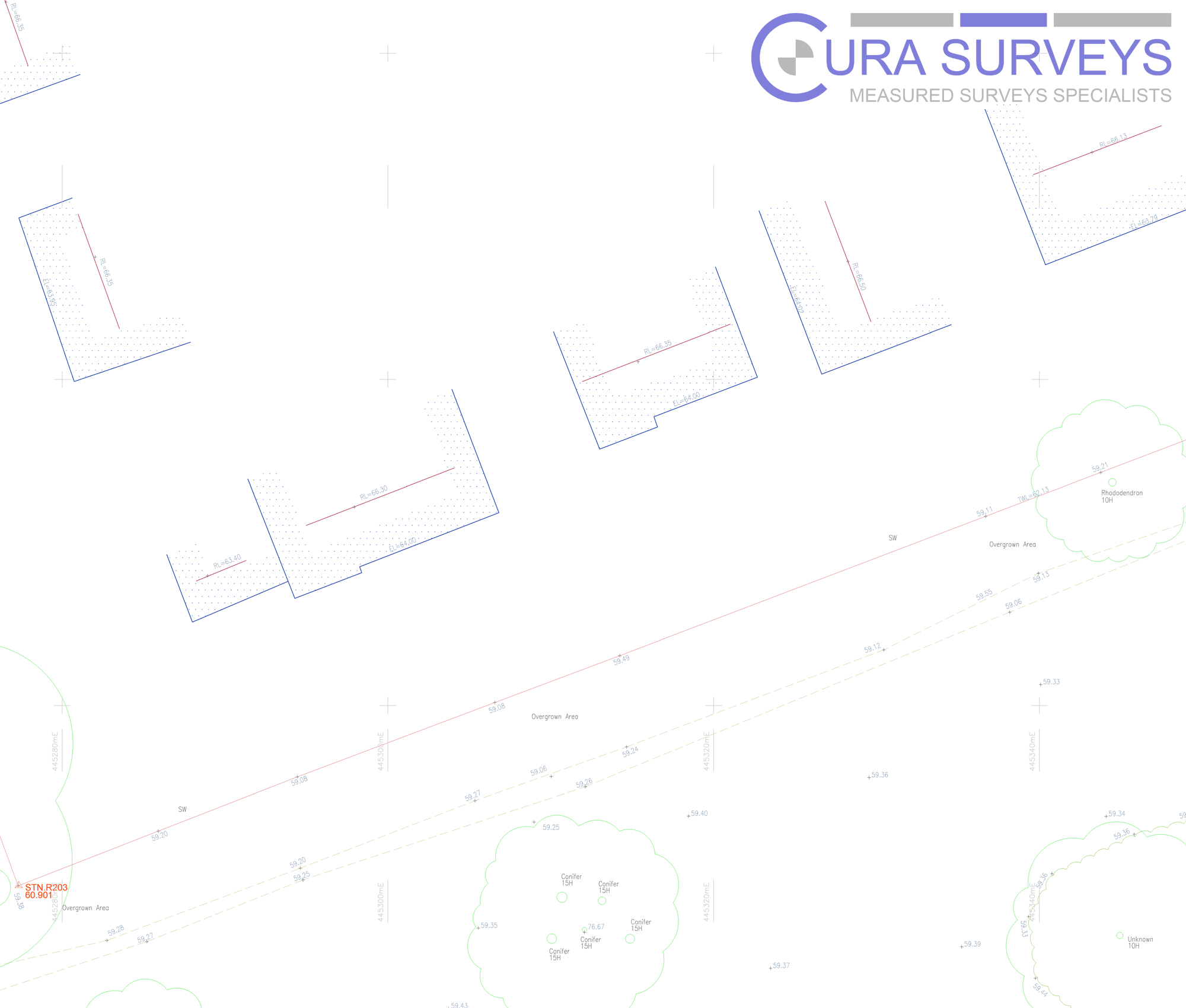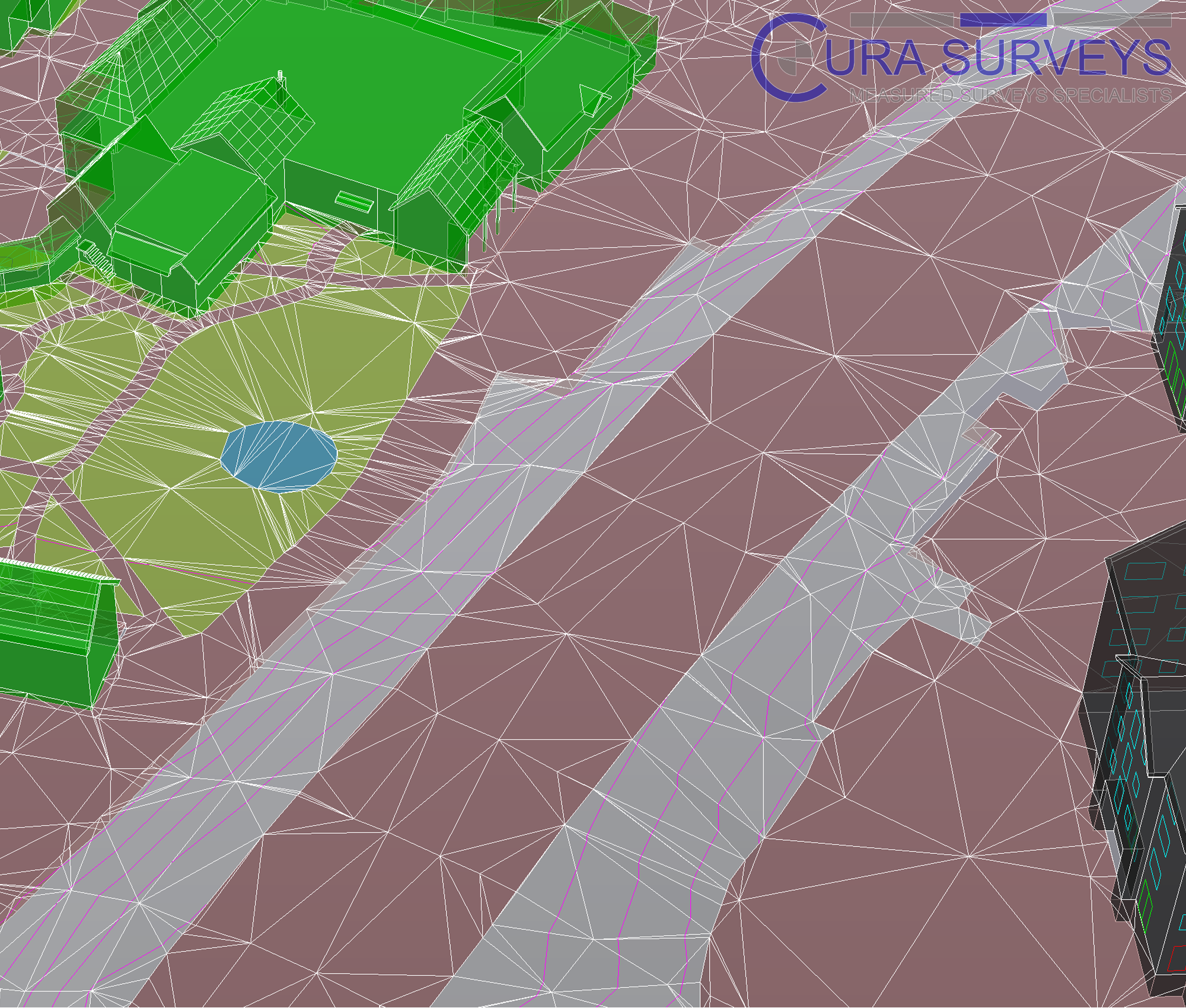Topographical Surveys London & the UK
What is a topographical survey?
A topographical survey is a detailed and comprehensive mapping technique used to capture and represent the physical features of a land area. It provides accurate information about the terrain, natural and man-made features, and the spatial relationships between them. This survey plays a crucial role in a wide range of industries, including urban planning, engineering, construction, land development, and environmental management. Here are some key aspects and benefits of a topographical survey:
Data Collection Methods: Topographical surveys employ various data collection methods to capture the characteristics of the land. These methods may include the use of advanced surveying instruments such as total stations, GPS receivers, and laser scanners. The survey team measures points across the site, including elevation, contours, trees, buildings, roads, bodies of water, and other significant features.
Accuracy and Detail: Topographical surveys aim to achieve a high level of accuracy and detail, typically represented in the form of a topographic map or a digital terrain model (DTM). These maps provide a precise representation of the land’s surface, including slopes, elevations, and changes in landform, enabling professionals to analyse and interpret the terrain effectively.
Planning and Design: Topographical surveys are essential for planning and designing infrastructure projects, such as roads, buildings, and drainage systems. The detailed information collected helps architects, engineers, and urban planners understand the existing conditions of the site, assess feasibility, and make informed decisions during the design phase.
Construction and Engineering: Topographical surveys play a critical role in construction projects. They provide accurate data on the terrain, allowing engineers to plan construction sequences, assess earthwork volumes, design foundations, and ensure proper site grading. This information helps minimise construction delays, errors, and costly rework.
Environmental Analysis: Topographical surveys support environmental analysis and management. They assist in identifying ecologically sensitive areas, assessing flood risks, understanding drainage patterns, and facilitating the design of sustainable land-use practices. By understanding the land’s natural features, environmental impact assessments can be more accurately conducted.
Land Development and Real Estate: Topographical surveys are often required in land development and real estate transactions. These surveys provide detailed information about the property’s boundaries, contours, and any existing easements or encumbrances. This data aids in land subdivision, site selection, and understanding the potential limitations or opportunities associated with a particular site.
Asset Management: Topographical surveys are valuable for long-term asset management. By periodically updating the survey data, property owners, facility managers, and local authorities can monitor changes in the land and infrastructure over time, plan maintenance activities, and ensure compliance with regulations.
In summary, a topographical survey provides critical information about the physical characteristics of a land area. Its accurate and detailed data supports decision-making, planning, design, construction, and environmental analysis in various industries. By providing a comprehensive understanding of the land’s features, a topographical survey serves as a foundation for successful and sustainable developments.
Call us on 0203 488 5858 or email info@curasurveys.co.uk with any questions or to get a quote.
Why use Cura Surveys for your topographical survey?

Cura Surveys is regulated by the Royal Institute of Chartered Surveyors (RICS)
RICS enforces the highest professional standards in the industry. As a regulated firm, our topographical surveys are carried out in accordance with the standards set by The Royal Institution of Chartered Surveyors (RICS), ’Measured surveys of land buildings and utilities,’ 3rd edition.
We are a team of highly experienced land surveyors, having worked on many UK’s major infrastructural projects including Crossrail, London Olympics and Heathrow Airport Terminal 2. Call us on 0203 488 5858 or email info@curasurveys.co.uk with any questions or to get a quote.
Why are topographical surveys important?
Topographical surveys are important for several reasons. Here are some key reasons why topographical surveys hold significance:
Planning and Design: Topographical surveys provide accurate and detailed information about the existing terrain and features of a land area. This data is crucial for architects, engineers, and urban planners during the planning and design phase of projects. It helps them understand the site’s constraints and opportunities, assess feasibility, and make informed decisions to optimise the design.
Construction and Engineering: Topographical surveys play a vital role in construction projects. They provide essential data on the land’s topography, including elevation, contours, slopes, and existing features. This information is used to plan construction sequences, assess earthwork volumes, design foundations, and ensure proper site grading. Accurate topographical data helps minimise construction errors, avoids costly rework, and ensures construction is aligned with the site’s characteristics.
Site Analysis and Evaluation: Topographical surveys provide a comprehensive understanding of the site’s natural and man-made features. This information aids in site analysis and evaluation, helping professionals identify potential challenges, such as flood risks, drainage issues, or environmental constraints. It also allows for effective decision-making regarding land use, site selection, and determining the suitability of a location for specific purposes.
Environmental Impact Assessment: Understanding the topography of a site is essential for conducting environmental impact assessments. Topographical surveys help identify ecologically sensitive areas, study drainage patterns, and assess the potential impact of a project on the surrounding environment. This information enables the development of appropriate mitigation measures and the design of sustainable land-use practices.
Land Development and Real Estate: Topographical surveys are often required for land development and real estate transactions. These surveys provide accurate boundary information, contours, and details about any existing easements or encumbrances. This data helps with land subdivision, site selection, and understanding the potential limitations or opportunities associated with a specific site. It provides valuable information for developers, property owners, and real estate professionals.
Asset Management: Topographical surveys support long-term asset management. Regularly updating the survey data allows property owners, facility managers, and local authorities to monitor changes in the land and infrastructure over time. This data aids in planning maintenance activities, assessing the impact of development in the vicinity, and ensuring compliance with regulations.
Overall, topographical surveys are important as they provide a foundation of accurate data for decision-making, planning, design, and construction. They help professionals understand the site’s characteristics, identify constraints, and optimise project outcomes while considering environmental factors and ensuring efficient land use.






